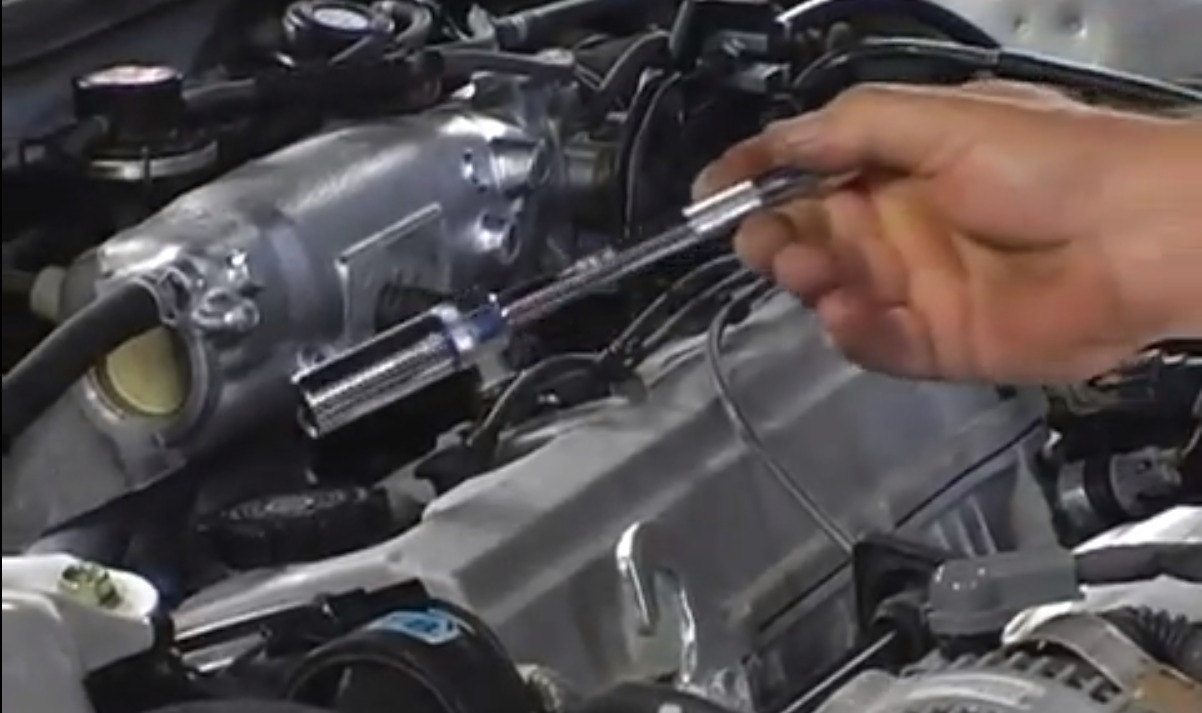Replace a spark plug
Learn to replace a spark plug on a small lawnmower engine with adult supervision, using basic tools, safety gear, and step by step instructions.



Step-by-step guide to replace a spark plug on a small lawnmower engine
How To Change & Inspect Spark Plugs
Step 1
Gather all the materials listed and place them near the mower so everything is ready.
Step 2
Move the mower to a flat outdoor area and make sure the engine is completely cool before you touch it.
Step 3
Turn the engine OFF and remove the ignition key if the mower has one.
Step 4
Put on your safety glasses and gloves so your eyes and hands stay safe.
Step 5
Ask an adult to help you pull the spark plug wire boot straight off the spark plug and tuck the wire away so it cannot touch the plug.
Step 6
Wipe the area around the spark plug with the clean rag to remove dirt so nothing falls into the engine.
Step 7
Fit the spark plug socket onto the old spark plug and use the ratchet to turn it counterclockwise until the plug comes out.
Step 8
Look at the old spark plug and compare it to the new one to check for cracks or heavy deposits with the adult helping you read what they mean.
Step 9
Use the gap gauge to check and set the gap on the new spark plug to match the mower maker’s specification.
Step 10
Thread the new spark plug into the hole by hand until it is finger-tight to avoid cross-threading.
Step 11
Use the spark plug socket and ratchet to tighten the plug: if the plug has a crush washer tighten about 1/2 turn after it seats otherwise tighten about 1/8 to 1/4 turn after it seats.
Step 12
Push the spark plug wire boot firmly back onto the new spark plug until it snaps into place.
Step 13
Put your tools away and wipe up any spills so the area is clean and safe.
Step 14
Take a photo or short note about your work and share your finished spark plug replacement project on DIY.org.
Final steps
You're almost there! Complete all the steps, bring your creation to life, post it, and conquer the challenge!


Help!?
What can we use if we don't have a spark plug socket or a gap gauge?
If you don't have a spark plug socket, use the correct-size deep socket (for example 5/8" or 13/16") with a rubber protector or a spark plug wrench, and if you lack a gap gauge use a thin feeler gauge or a calibrated business card to set the spark plug gap to the mower maker's specification.
What should we do if the old spark plug won't come out when we turn the ratchet counterclockwise?
If the plug won't loosen when you turn the ratchet counterclockwise with the spark plug socket, spray penetrating oil around the plug, wait 10–15 minutes, then try again with a longer breaker bar and adult help to avoid rounding the hex or damaging threads.
How can this activity be adapted for different age groups?
For younger children (about 5–8) have them gather materials, wipe the area with the clean rag, and take photos while an adult performs the spark plug removal and ratcheting, older kids (9–14) can remove the spark plug wire boot with supervision and use the gap gauge, and teens (15+) can complete the full procedure following the safety steps (engine cool, ignition key removed, safety glasses and gloves).
How can we extend or personalize the spark plug replacement project?
To extend the activity, log the old and new spark plug types, record the gap setting and date, take before-and-after photos for DIY.org, test-start the mower to note performance changes, and optionally try a manufacturer-recommended upgrade plug to compare results.
Watch videos on how to replace a spark plug on a small lawnmower engine
How to Change Your Spark Plugs - Step-by-Step DIY with Tips
Facts about small engine maintenance for kids
⚠️ Overtightening a spark plug can crack an aluminum engine head, so use the right torque or a snug wrench turn after hand-tightening.
⚡ A spark plug creates a tiny but powerful electrical spark—often tens of thousands of volts—to ignite the fuel-air mix.
🌿 A fresh spark plug helps engines start easier, run cleaner, and use fuel more efficiently—better for your mower and the planet.
🔧 Most lawn mower spark plugs are recommended to be replaced every season or about every 100 hours of use.
📏 The spark plug gap on many small engines is very small (around 0.03 inches), about the thickness of a few sheets of paper.
How do I teach my child to replace a spark plug on a small lawnmower engine?
What materials and tools are needed to replace a lawnmower spark plug?
What ages is learning to replace a spark plug suitable for?
What are the safety tips and benefits of teaching kids to replace a spark plug?


One subscription, many ways to play and learn.
Only $6.99 after trial. No credit card required



